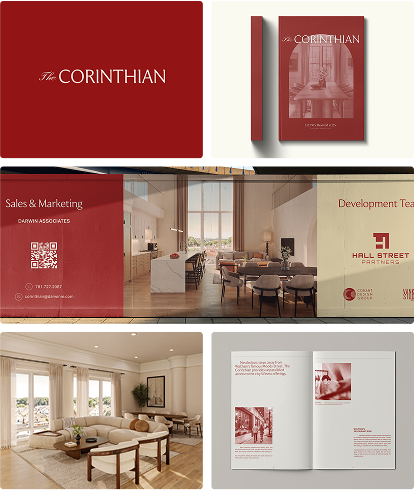
Developers and realtors have a symbiotic relationship. Sometimes one person takes on both roles, but usually, it’s two sides coming together. Make no mistake, though — realtors, we love you, but developers hold the power here. They’re the ones creating the product, and realtors are the ones battling for the privilege to sell it.
A great realtor isn’t just looking to sell the property, though. That’s a given. A great realtor is looking to raise the developer’s profile, which makes marketing a core priority.
Here are some of the key things that developers should ask for from their realtors:
Dazzling visuals have the capacity to cover up for a lot of mistakes. That’s not to say that there’ll be mistakes, of course — but it gives you a margin for error and a leg up on the competition. Beautiful renders can elevate the perceived value of a presentation that a developer makes to, say, an investor. From our post “How to Save Money by Spending More on Renders”:
Whether you're a developer, real estate agent, or hold some other role in the real estate world, you're trying to impress someone — investors, buyers, new listing prospects. And good renders = good branding. They say, "Work with me, and this is the kind of quality you can expect." If you're simply trying to check a box, the cheaper renders are probably a fine option. If you think about why you're purchasing the render in the first place, though — to sell the property and grab attention and impress people — will a cheap render really help you do that? If you want people to think you're a first-class professional, use first-class renders.
In other words: Invest in renders worthy of the time you’re putting into this project.
It’s true that housing falls under the dreaded Special Ad Categories on Facebook, meaning that there are fewer options to target people by in order to prevent discrimination. However, there is a gigantic opportunity to put together some great creative showing off a property (a well-designed carousel of images, for example) that’ll generate clickthroughs and give a property visibility beyond just one of many on a listing website.
We often see realtors start by creating Instagram accounts for multi-unit properties. But as we established in our last post (”Why No One Wants to Follow Your New Development’s Instagram Account”) — they usually go about it wrong:
…rather than looking at your Instagram account as a channel in which to share ongoing content, configure it like a website, and set it up in its entirety up front — filling out the profile information, posting 9 or so images/videos, adding Stories highlights — almost like you’re launching a website that you know people are going to visit.
So if you’re setting up an Instagram profile for a development, keep it simple. But when it comes to ads, spend more time on the creative, and worry less about the targeting. There’s limited criteria to define an audience by, thanks to Special Ad Categories, and Facebook’s AI will do a good job at finding the right people. It’ll be up to your creative to convert them.
There’s no replacing the feeling of something in your hands. Artfully designed print collateral can make a lasting impression and has a way of sticking around (literally laying on a desk or coffee table) in a way that digital materials generally don’t. And it’s not just to entice buyers, but to excite investors, too. Print establishes trust, gives you full control over the experience (i.e. no worrying about mobile vs. desktop browsers, load speeds, how images render, etc.), and hangs around in a way that digital marketing can’t. Realtors would be wise to include print collateral as part of their marketing mix.



